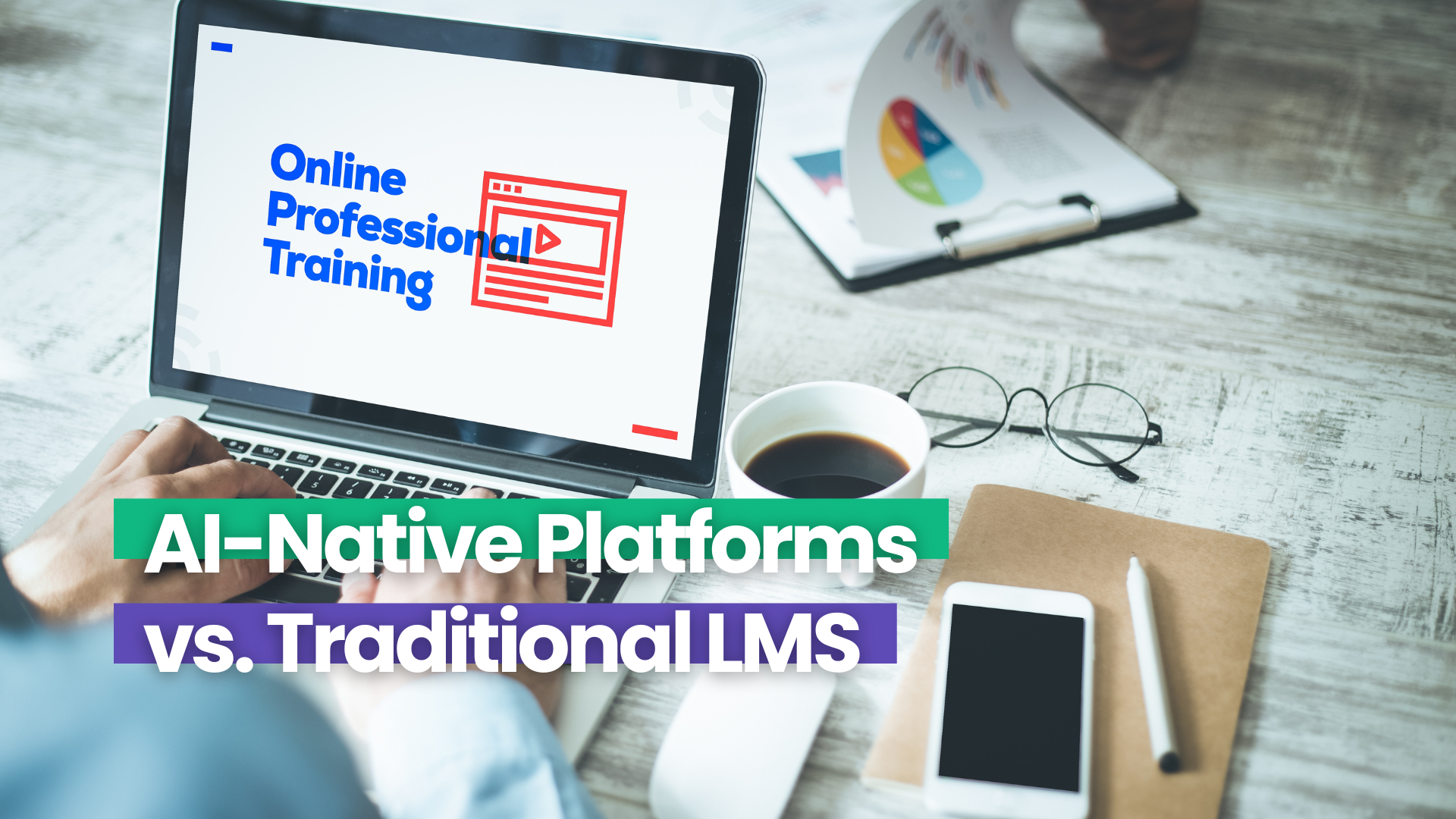Over the last two years, generative AI has entered the workplace at full speed, and for many, the first experience has been using tools like ChatGPT to brainstorm ideas, draft content, or answer questions. These capabilities are undeniably powerful. But in learning and development (L&D), the real challenge isn’t creating text; it’s designing structured, measurable learning experiences that actually improve skills. And that’s where the gap appears.
Why Traditional Platforms Fall Short
Most learning platforms on the market today weren’t built for AI. They were built as traditional learning management systems (LMS) and later retrofitted with AI features. These additions can make them more efficient, but they don’t fundamentally change the way training is created. They also tend to assume that organizations already have a dedicated learning department, instructional designers, and the time to build out formal training programs. But the reality is that most SMBs don’t have that infrastructure. They either go without training or put the burden on HR or department heads, people who are already stretched thin and not equipped to create effective learning experiences.
This is exactly the challenge PETE was built to solve: helping organizations of all sizes transform their existing knowledge and resources into a full learning experience, without the need for L&D team.
From Content Creation to Instructional Design Automation
Instructional design is the backbone of effective training. It’s the discipline that ensures learning experiences have a clear structure, clear learning outcomes, and the right mix of activities to drive retention. Without it, training risks being little more than a collection of slides or documents.
AI has the potential to bridge this gap. By embedding instructional design principles directly into AI systems, it’s now possible to generate not just content, but complete training programs that are both engaging and effective. Instead of starting with an empty LMS and a mountain of content to organize, companies can start with the expertise they already have: manuals, process documents, presentations, and use AI to transform that knowledge into cohesive, outcome-driven training.
Native AI Platforms vs. AI as an Add-On
There’s an important distinction between AI-native platforms and traditional LMS tools with AI bolted on. AI-native platforms like PETE are designed from the ground up to use artificial intelligence as the engine for learning creation, delivery, and measurement. While 90% of AI solutions in this space are just wrappers around basic APIs, PETE delivers a full-stack learning engine built to scale human expertise instantly, accurately, and intelligently.
At the core of PETE is our proprietary, patent-pending technology called Cognition. Cognition automates the entire instructional design process, which is something no off-the-shelf AI tool can do on its own. With PETE’s AI tools, the entire learning experience can be automated:
- Writing lesson narratives grounded in learning objectives
- Creating visuals, slides, and voiceovers
- Building avatar-powered simulations for assessments
- Tracking and analyzing learner performance in real time
This isn’t just a more efficient way to build training, but rather a fundamentally different way of thinking about how knowledge is transferred at scale. It’s like having an expert instructional designer, trainer, and LMS all in one.
The Bottom Line
Generative AI may have started as a tool for content creation, but its real value in L&D lies in building the kind of structured, effective experiences that turn information into capability.
The future of workplace learning will be defined by AI systems that understand both the science of learning and the realities of modern business. For many organizations, especially those without large training teams, AI-native platforms that integrate instructional design principles are the way to deliver high-quality, scalable training without the additional headcount.



